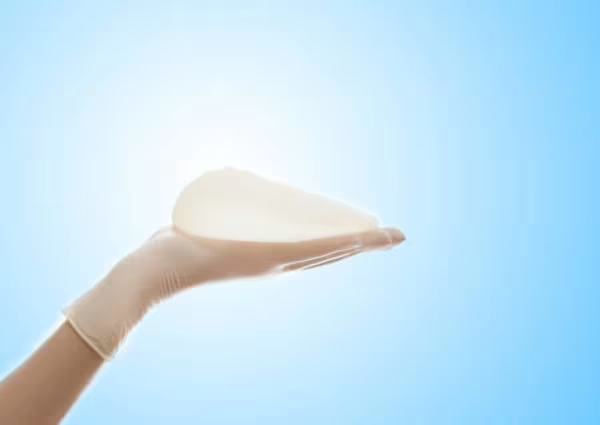
It’s a question that seems as old as time–or at least as old as breast implants. When you’re considering breast augmentation, should you choose saline implants or silicone implants? The truth? There’s no one correct answer. Saline implants might be perfect for one person, but not the right choice for another.
When deciding between saline or silicone implants, it helps to weigh the pros and cons of each so you can pick the type that best meets your needs. Let’s take a look at some of the differences between the two materials so you can get an idea of which option will help you reach your aesthetic goals.
Look and Feel
When positioned in the breasts, silicone and saline implants differ in terms of look and feel. Silicone implants typically have a more natural feel. The material inside the implant feels more like natural breast tissue. It’s somewhat soft and squishy, while filled saline implants tend to feel firm to the touch.
The positioning of the implant in the breasts can also affect how it feels. For example, placing the implants under the muscle usually creates a softer, more natural feel with both saline and silicone implants. But if the implants are put on top of the muscle, silicone usually feels softer and more natural.
Once the implants are placed, they usually look considerably different. Saline implants tend to look more artificial, as they usually create a rounder breast. There’s also a higher chance that saline implants will create wrinkles or rippling in the skin.
Winner: Silicone
Size and Shape
Saline implants seem to have a bit of an edge over silicone implants when it comes to size. The main reason for this is that a surgeon can place the implants in the breasts, then fill them with saline. Doing so allows a surgeon to truly customize the size of the implant. Silicone implants are only available in predetermined sizes. They also typically require larger incisions during placement, since the pre-filled implants are larger when they’re being put in.
Both silicone and saline implants are available in a variety of size, notably teardrop-shaped and round. Patients can also choose from a variety of profiles, or heights, for either type of implant.
Winner: Saline
Durability
The FDA notes that breast implants aren’t designed to be lifetime devices. There is a likelihood that you’ll need to change them out or remove them at some point. Whether you remove them because of a change in preference or because of damage to the implant depends on your situation.
Usually, both saline and silicone implants have long usage lives. Both can last for 10 years, if not more. Modern implants are becoming more durable all the time.
When it comes to detecting an issue with the implants, saline has a slight edge. If a saline implant bursts or springs a leak, the salt water inside of it will quickly leak out, causing the implant to deflate. Since silicone implants are filled with a thick gel, they are less likely to leak if there’s a rupture, making it more difficult to tell if there’s a problem.
In some cases, silicone implants have a better warranty than saline. Some saline implants have a 10-year warranty while some silicone implants have a lifetime guarantee.
Winner: Tie
Risks
Both saline and silicone implants are safe and are approved by the FDA for breast augmentation or reconstruction. But that doesn’t mean that they aren’t without risks. One possible risk is something called capsular contracture, which occurs when scar tissue forms around the implant and squeezes it. Capsular contracture can change the shape of the breasts and can be pretty painful if it reaches an advanced stage. The only way to treat it is to remove (and possibly replace) the implants.
Although capsular contracture can occur with both saline or silicone implants, there’s a slightly higher risk with saline implants.
Winner: Silicone
Cost
The price of breast implants can vary depending on the brand and the type of material used. While saline implants can be less expensive than silicone, the difference in cost becomes less significant when you factor in the total expense of surgery—including anesthesia, operating room fees, and follow-up care.
Although saline implants may seem like a more budget-friendly option at first glance, silicone implants are widely considered the superior choice for their more natural look and feel, better aesthetic outcomes, and lower risk of rippling. When making your decision, it’s essential to look beyond cost and consider which option will provide the best long-term results and satisfaction. Quality matters—and with silicone implants, you’re investing in a more natural, refined outcome.
Winner: Silicone
Dr. Paul Vitenas, a board-certified plastic surgeon in Houston, TX, has nearly 35 years of experience helping patients achieve beautiful and natural results. Whether you are considering saline or silicone implants, Dr. Vitenas will help guide you in choosing the type, size and profile that will best help you reach your goals. To learn more, call 281-909-4058 to schedule a consultation with Dr. Vitenas today.
